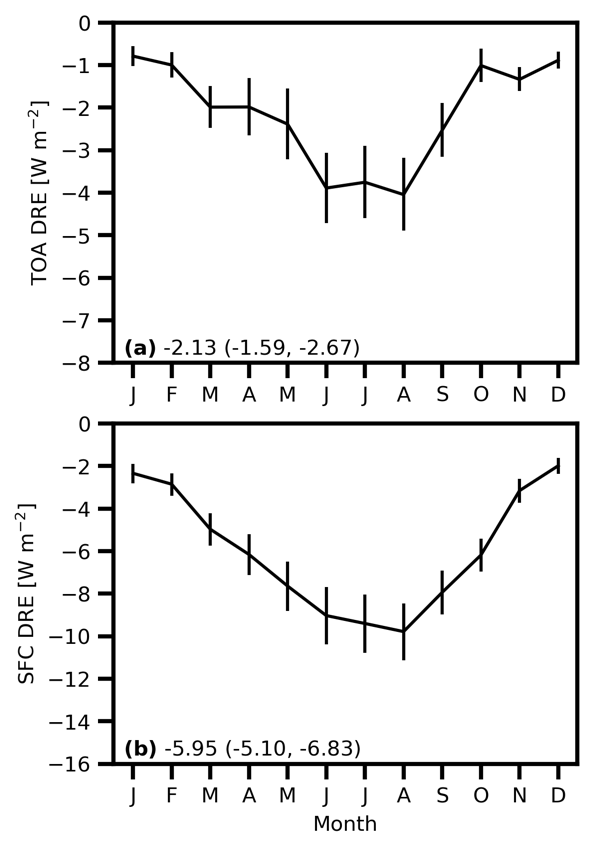All-sky aerosol direct radiative effects at the ARM SGP observatory
Submitter:
Fu, Qiang — University of Washington
Area of research:
Radiation Processes
Journal Reference:
Science
For the first time, we quantified all-sky aerosol direct radiative effect (DRE) at the Atmospheric Radiation Measurement (ARM) Southern Great Plains (SGP) observatory by using the advanced ARM multi-year ground-based comprehensive measurements of aerosol, cloud, radiation, and atmospheric state. We found that the annual mean all-sky aerosol DRE at the top of the atmosphere (TOA) is −2.13+-0.54 W m−2, compared to −3.00+-0.58 W m−2 for clear skies. We show that the relative uncertainty in estimated all-sky TOA aerosol DRE due to aerosol single-scattering albedo errors is larger than for clear skies.
Impact
The estimated aerosol DREs provide a reference to validate the satellite- and model-derived aerosol DREs.
Summary
All-sky aerosol DRE was estimated for the first time at the ARM Southern Great Plains observatory using multi-year ground-based observations. The NASA Langley Fu-Liou radiation model was employed. Observed inputs for the radiation model include aerosol and cloud vertical extinction profile from Raman lidar; spectral aerosol optical depth, single-scattering albedo, and asymmetry factor from the Aerosol Robotic Network; cloud water content profiles from radars; temperature and water vapor profiles from radiosondes; and surface shortwave spectral albedo from radiometers. A cloudy-sky radiative closure experiment was performed. The relative mean differences between modeled and observed surface downwelling shortwave total fluxes were ~6% for cloudy skies. The estimated annual mean all-sky aerosol DRE is −2.13+-0.54 W m−2 at the TOA and −5.95+-0.87 W m−2 at the surface, compared to −3.00+-0.58 W m−2 and −6.85+-1.00 W m−2, respectively, under clear-sky conditions. The seasonal cycle of all-sky aerosol DRE is similar to that of the clear sky, except with secondary influences of the clouds. The cloud radiative effect is strongest (most negative) in the spring, which reduces the all-sky aerosol DRE. The relative uncertainties in all-sky aerosol DRE due to measurement errors are generally comparable to those in clear-sky conditions except for the aerosol single-scattering albedo. The TOA all-sky aerosol DRE relative uncertainty due to aerosol single-scattering albedo uncertainty is larger than that in clear sky, leading to a larger total relative uncertainty. The measurement errors in cloud properties have small effects on the all-sky aerosol DRE.



